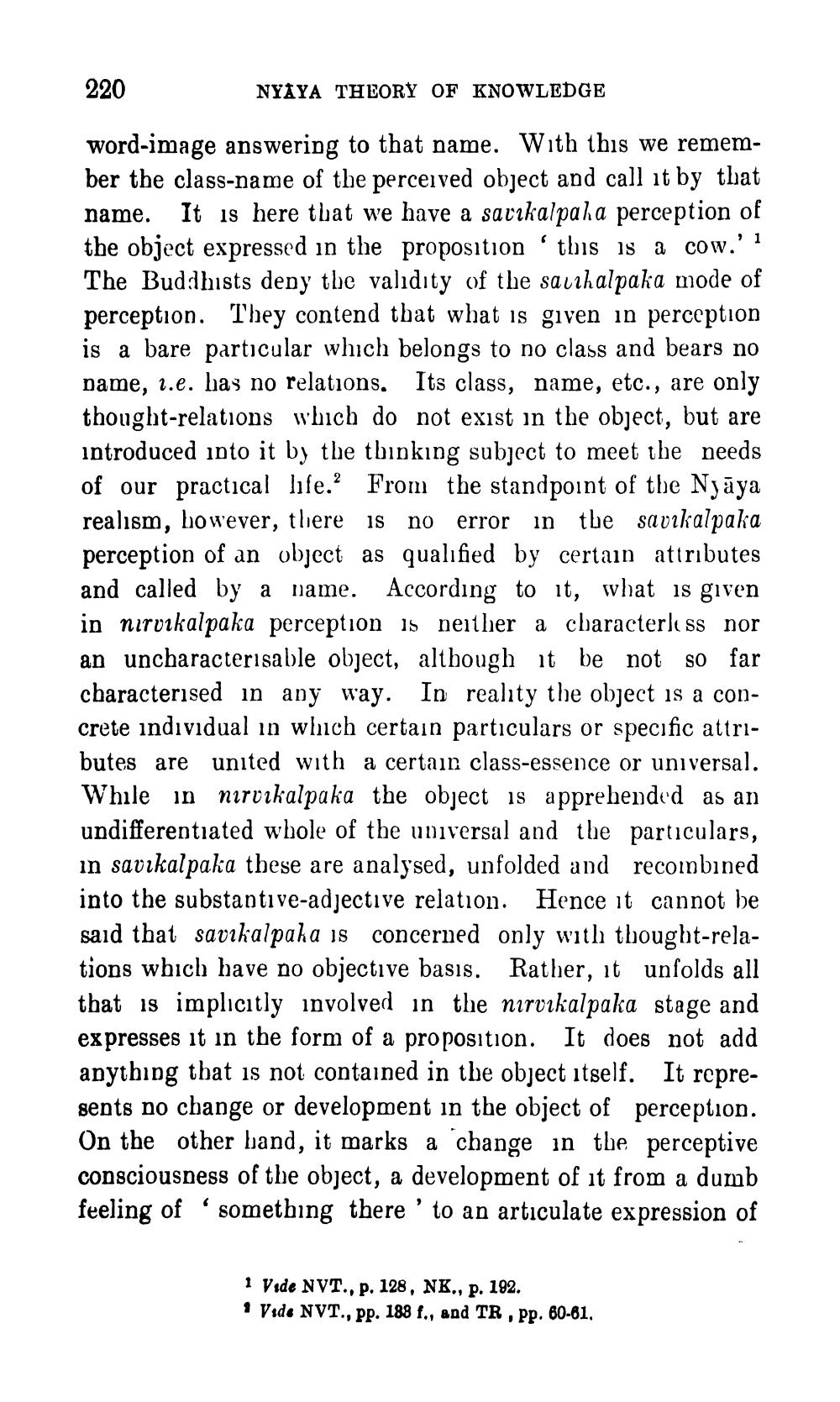________________
220
NYAYA THEORY OF KNOWLEDGE
"
1
nor
word-image answering to that name. With this we remember the class-name of the perceived object and call it by that name. It is here that we have a savikalpaha perception of the object expressed in the proposition this is a cow.' The Buddhists deny the validity of the sachalpaka mode of perception. They contend that what is given in perception is a bare particular which belongs to no class and bears no name, .e. has no relations. Its class, name, etc., are only thought-relations which do not exist in the object, but are introduced into it by the thinking subject to meet the needs of our practical life. From the standpoint of the Nyaya realism, however, there is no error in the savikalpaka perception of an object as qualified by certain attributes and called by a name. According to it, what is given in nirvikalpaka perception is neither a characterless an uncharacterisable object, although it be not so far characterised in any way. In reality the object is a concrete individual in which certain particulars or specific attributes are united with a certain class-essence or universal. While in nirvikalpaka the object is apprehended as an undifferentiated whole of the universal and the particulars, in savikalpaka these are analysed, unfolded and recombined into the substantive-adjective relation. Hence it cannot be said that savikalpaka is concerned only with thought-relations which have no objective basis. Rather, it unfolds all that is implicitly involved in the nirvikalpaka stage and expresses it in the form of a proposition. It does not add anything that is not contained in the object itself. It represents no change or development in the object of perception. On the other hand, it marks a change in the perceptive consciousness of the object, a development of it from a dumb feeling of something there' to an articulate expression of
1 Vide NVT., p. 128, NK., p. 192.
1 Vide NVT., pp. 188 f., and TR, pp. 60-61.




